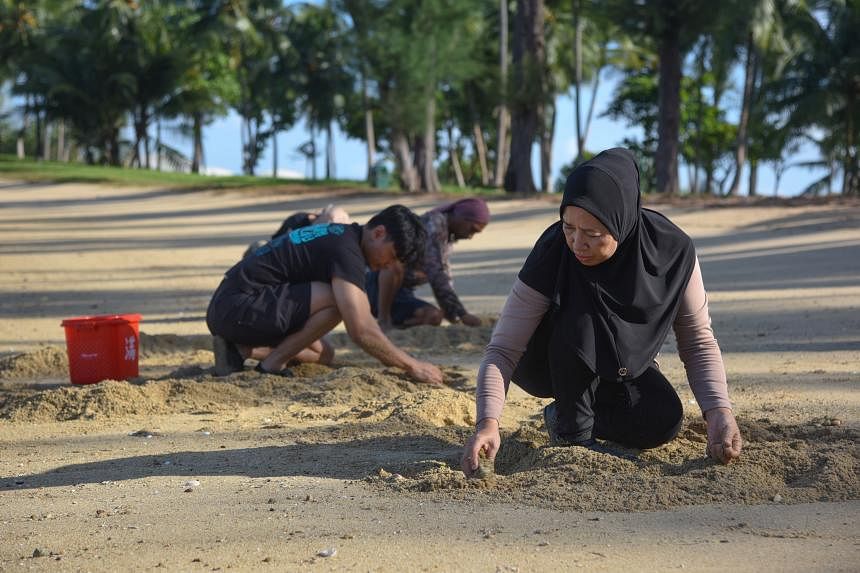SINGAPORE – In a country governed by appetite, it is a delicious irony to find food hiding in plain sight.
All over Singapore – on common grass patches, roadside trees and sandy beaches – edible life flourishes, unnoticed by most. Only local foragers are exempt from ignorance.
Foraging – the ancient practice of gathering useful flora and fauna for food, medicine or art – is enjoying a quiet renaissance, though it remains a fringe interest.
Mr Alexius Yeo, 39, foraging guide and director of permaculture company Carbon InQ, logged a twofold increase in sign-ups for his foraging class post-pandemic, even with stiffer competition as more guides have emerged.
Nature’s covert store is hardly “exotic”, he said. Its deep roots in the region extend to a pre-metropolitan Singapore, when Malays foraged for food, with a fondness for ulam (a raw salad), and the Chinese scavenged for medicine, prizing the leaves of the cat’s whiskers plant.
As a rule, the author of the book 101 Edible Plants prefers to meet his class wherever they are, if only to show them that food is literally growing at their doorstep.
Sometimes, this means taking white-collar clients to the grass field outside their office building or a school group for a walk around their campus. Mostly, they find weeds – pest plants believed to be the enemy of crops.
Of the 101 plants itemised in his book, a local catalogue, Mr Yeo’s favourites are the most ubiquitous weeds: lavender sorrel, the wild pepper plant and the gunpowder plant, which are found “easily everywhere”, he said.
“That’s what fascinates people most, the weeds,” he said, “because they recognise them and say they hate them, but after learning they can be eaten or used for healing, they get excited.”
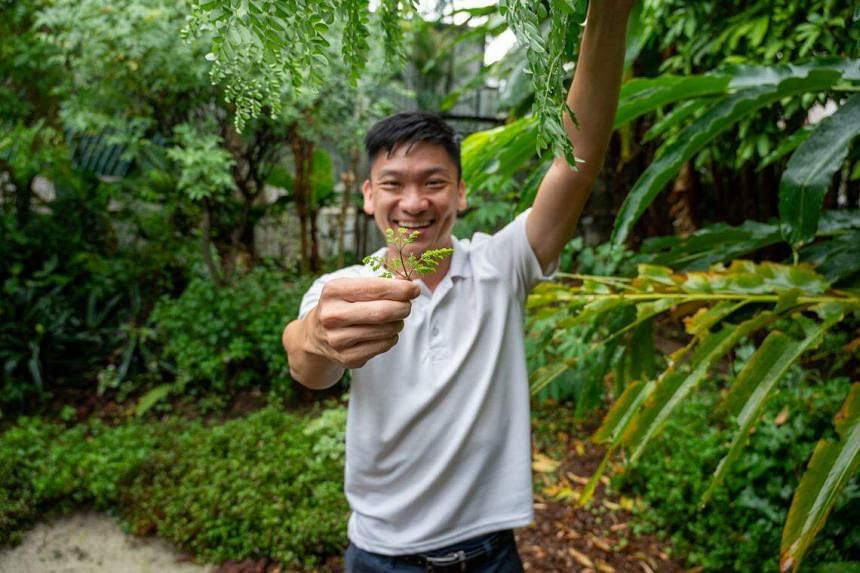
Another urban forager, Mr Esmonde Luo, 36, said more diverse groups are beginning to approach him for his $80-a-pop tours, including chefs, students and office workers.
More visibly, chef de partie Ian Tan, 27, at Italian eatery Bottega di Carna bagged the World Young Chef award in 2023 with a garnish of foraged ginger flowers and wild pepper leaves – the former providing a “gentle tartness” that could not be bought in stores, he said.
Mr Yeo and Mr Luo say the work of a forager is, by design, often solitary. The pair have gone upwards of 10 years in the scene without ever crossing paths – still, both guides say the sudden tide of interest stems from a concern over food security.
The pandemic exposed the fragility of the supply chain, said Mr Luo, “freaking people out” and driving a turn towards the local bounty.
Take nasty, make tasty
But if fear of an empty larder has awakened a desire to live off the land, it has not translated into any significant changes in the diets of foragers, who estimate that no more than 10 per cent of their meals are foraged. Neither did food scarcity nor its threat push the self-taught Mr Luo into practice a decade ago. Other appetites were at play.
What hooked him was curiosity.
During a routine stroll at HortPark, the full-time landscaper noticed that certain weeds bore an uncanny resemblance to the plants grown in the garden lots. “Could they be eaten too?” he wondered.
He began investigating, identifying new plants from scientific books and then administering an “edibility test” by touching the unfamiliar plant to increasingly sensitive areas of his body to check for adverse reactions. Finally, he would pop it into his mouth, raw.
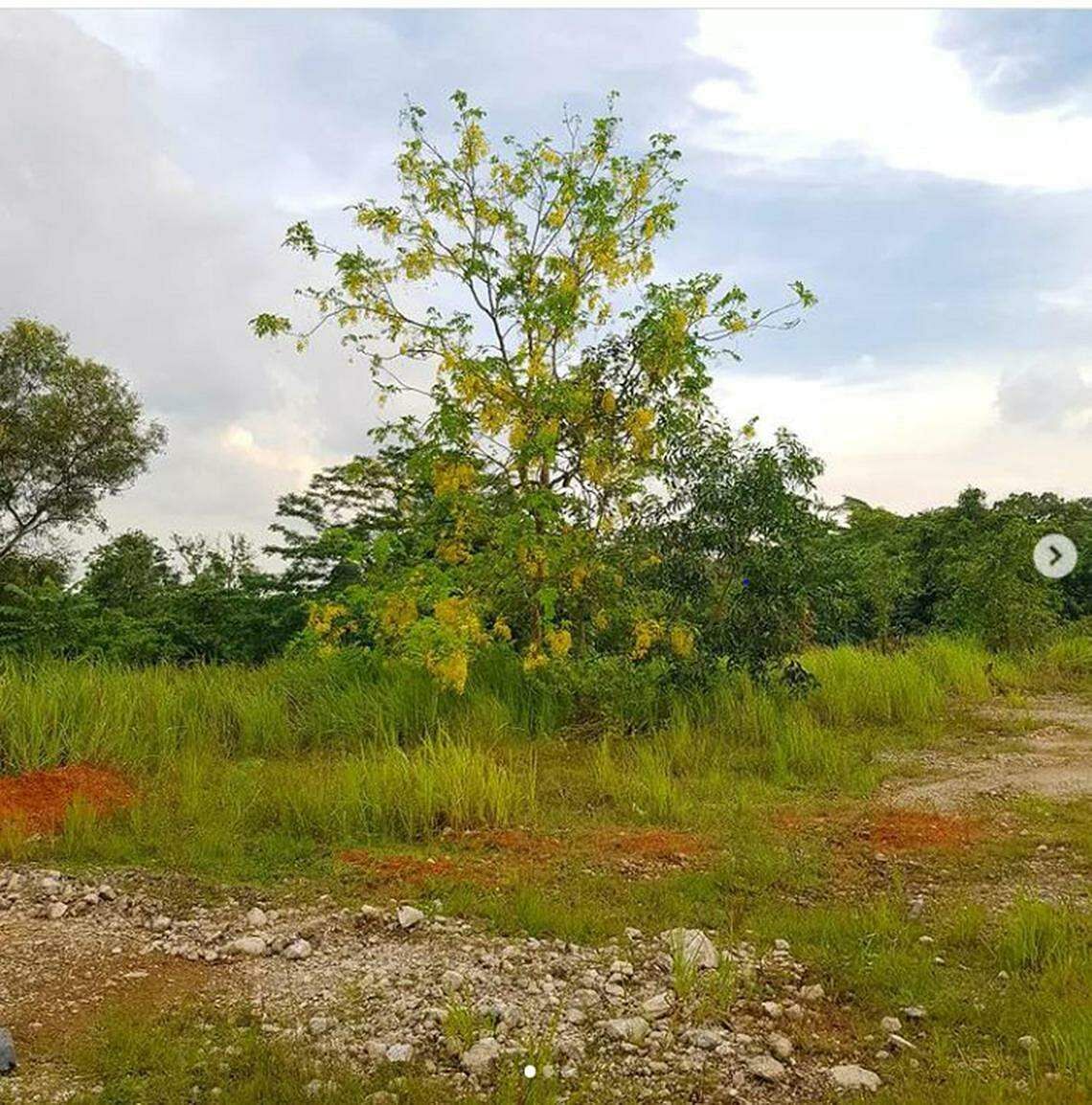
The results were and still are dutifully recorded in his field notes.
“It’s a lot of trial and error,” Mr Luo said, while cautioning that most edible plants taste awful raw.
It can be dangerous, too.
Years ago, he boiled wild yam to neutralise its numbing effect, only to have it sear his mouth with “pins and needles”, he said. The “poison” was mild, but he had to stop eating it.
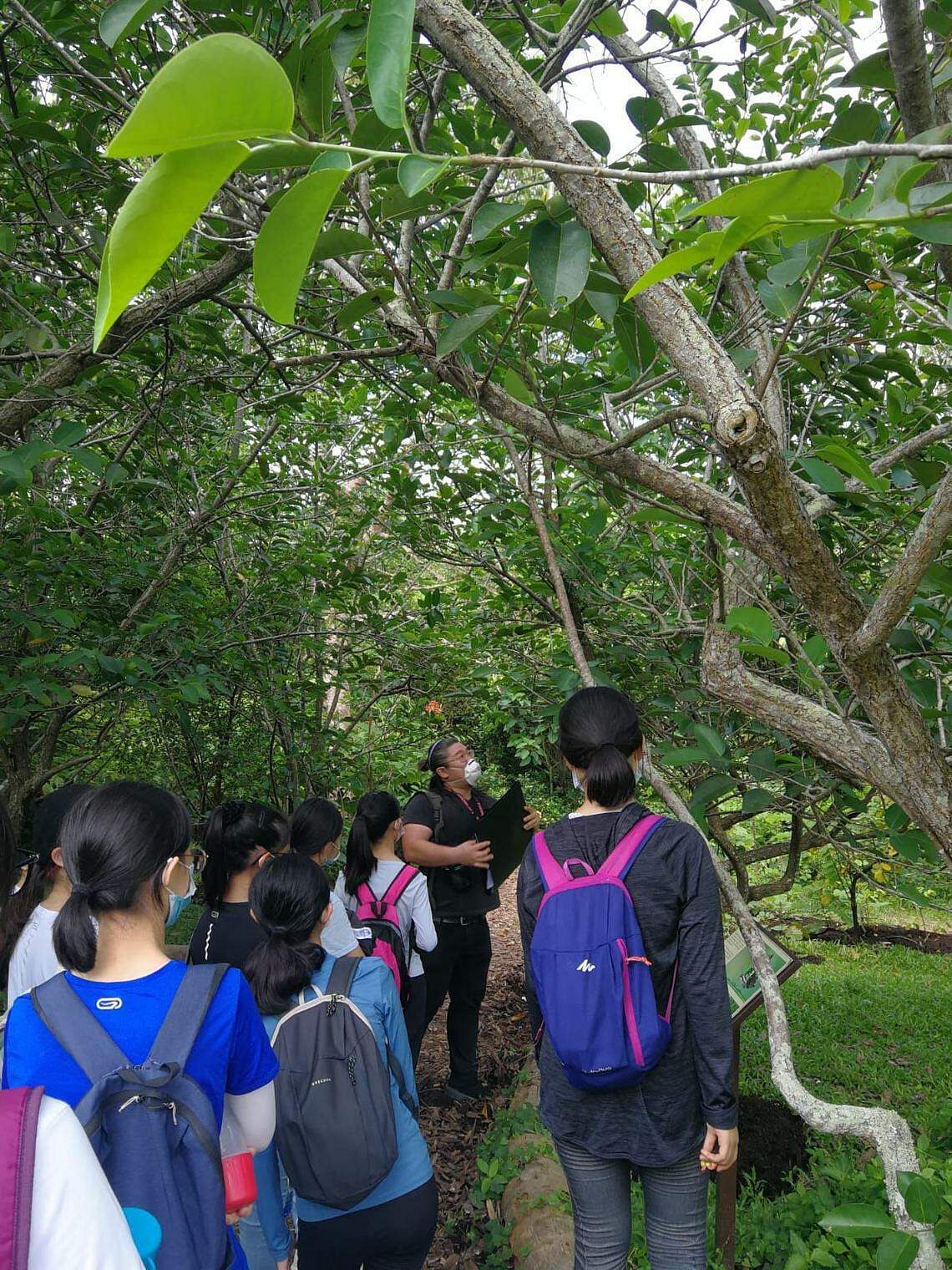
The risk and reward are part of the fun, said Mr Luo, whose biggest success has been fermenting the “unbearably sour” rukam masam fruit into a delicious wine, which his friends say tastes like umeshu, a Japanese plum liqueur.
“It’s fascinating to turn the nasty into the tasty,” he said.
For him, the pleasure of discovery is at the heart of his quest.
“Adventurous people are always looking for new things to touch and transform. That’s what foraged food represents to me – new frontiers, new possibilities in tiny Singapore,” said Mr Luo.
But the novelty of urban foraging is only half the picture in Singapore, where former islanders and their descendants practise a saltier, much older form: coastal foraging.
Nenek moyangku adalah pelaut (My ancestors were sailors)
For this group, who take from the sea, foraging is less a hobby than an act of cultural retrieval, a way of evoking a lost way of life after their families were resettled to the mainland in the 1970s.
As he watched his mother, uncle and brother, all hailing from Pulau Semakau, pick molluscs from the waters off Pulau Hantu, the founder of Orang Laut SG, Mr Firdaus Sani, 35, told The Straits Times: “This is embedded in our day-to-day lives. Islanders needed to forage to survive.”
Mother and son stood stooped in the shallow water of an islet, scanning the sea for the flash of pink and stripe of green typical of the siput ranga’s shell, the sudden white of the gong gong jantan and the fat orange flesh of the siput kilah – all staples of a bygone diet, when supermarkets were a boat ride away.
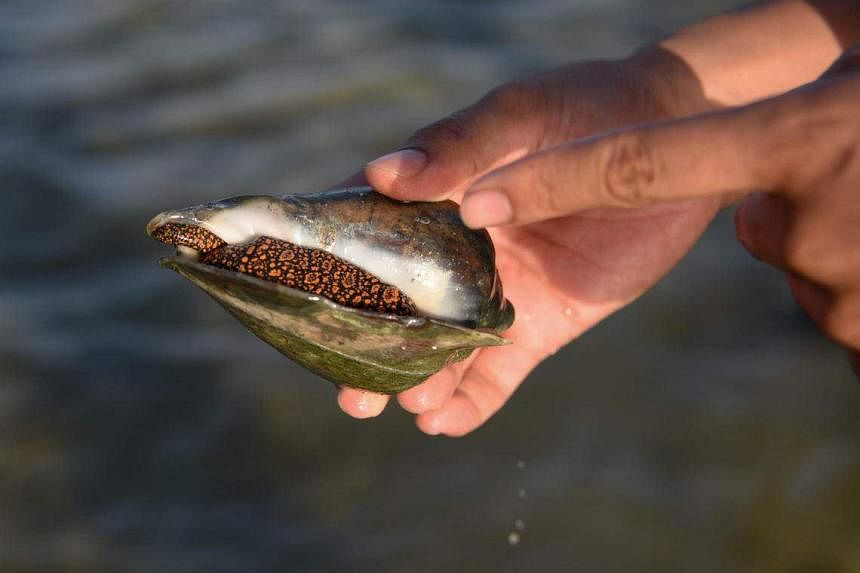
Though they no longer forage for subsistence, Mr Firdaus said the practice is essential to his family life and is the chief means by which wisdom is passed down. “I learn everything from my mother.”
For the people of the sea, or the Orang Laut, the foraging know-how runs much deeper than what is edible and how to prepare it.
There is the tricky business of telling the weather, reading the tides from the sharpness of waves, finding the direction of the wind – “a north wind is best for fishing” – and mastering the sea walk, a way of gliding one’s feet on the seabed so as not to spook lurking stonefish that may retaliate with a venomous sting.
There is an etiquette to it, too; for the sea is a guardian, with its own set of rules, said Mr Firdaus.
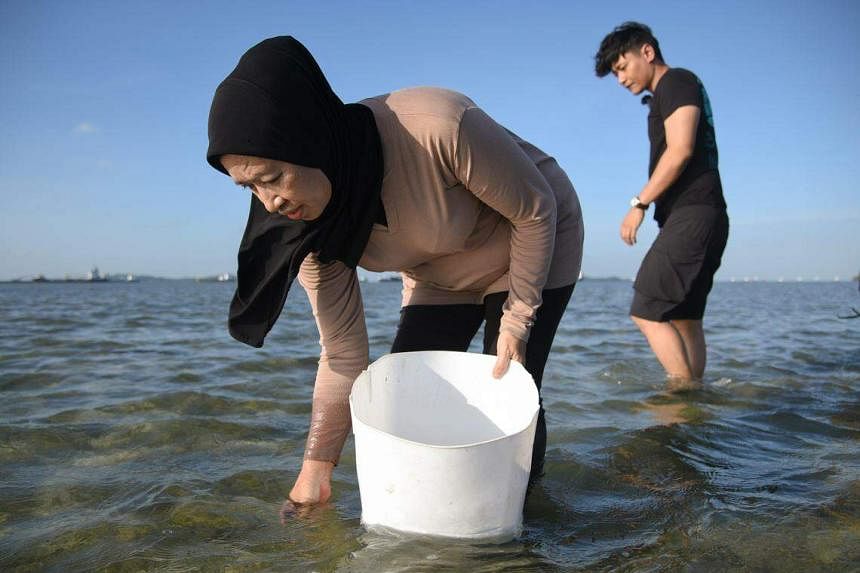
As a child, Mr Firdaus was once so absorbed in gathering clams from the beach that his family drove off without him.
“I was caught up in the heat of the moment,” he said, “and ended up crying on the beach alone.” It was an early lesson against greed.
Three decades later, he would instruct the ST team accompanying him to return all small clams raked from the beach. “We never take the babies, and we never take more than we need,” he said.
‘Everything must have a purpose’
Another rule: “Everything we take must have a purpose.”
The sea sponge is desiccated and used as a dishwashing sponge, the spider conch is eaten without seasoning for its sweet flesh, and the yellow hibiscus is used for ritual.
What emerges is a complex custom, dense with memory from a time before one’s own – what is often bluntly reduced to “tradition”. The existential threat seems to come with the territory.
“It isn’t like it used to be,” said Mr Firdaus’ mother Nooraini Rani, 64, as she expertly scooped shellfish from what appeared to be lifeless mounds of sand. “Last time, this whole place got (fish), now very little,” she said.
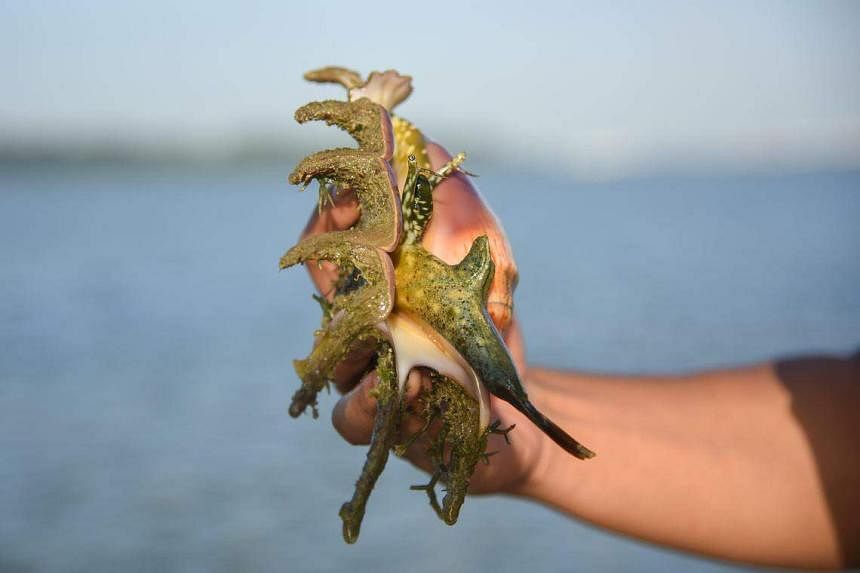
Mr Firdaus puts the slim pickings down to changing weather patterns and pollution. In the distance, the hard, white towers of Pulau Bukom – an island reserved for an oil refinery – glint like unholy minarets.
The story is much the same on the mainland, where Mr Syazwan Majid, 27, whose family once lived on Pulau Ubin, forages with his mother. His fondest memories are of digging for lokan (mangrove clams) in the mangroves of Admiralty, Seletar and Jurong, each a muddy sensorium.
“I’ll always remember the smell of the mud, salty from the sea, mixed with the freshwater scent of the river. I would always lose a pair of shoes,” he said.
Being caked in mud and scratched by prickly roots felt entirely correct to him, said the undergraduate at the Singapore University of Social Sciences. After all, his mother used to live right next to the mangroves on Pulau Ubin.
“This is who we are,” Mr Syazwan said. “What is the joy of foraging? It’s a heavy question for me because so much of Singapore’s native history has been erased. People don’t know the Malay names for islands. Foraging is the only thing that can remind us of our past that we are still able to do today.”
The mangroves of his childhood are long gone, turned into various parks and developments. What is left to mother and son are the beaches that hide la la, but even that feels vulnerable now, he said, pointing to signs put up by the authorities roundly denouncing foraging.
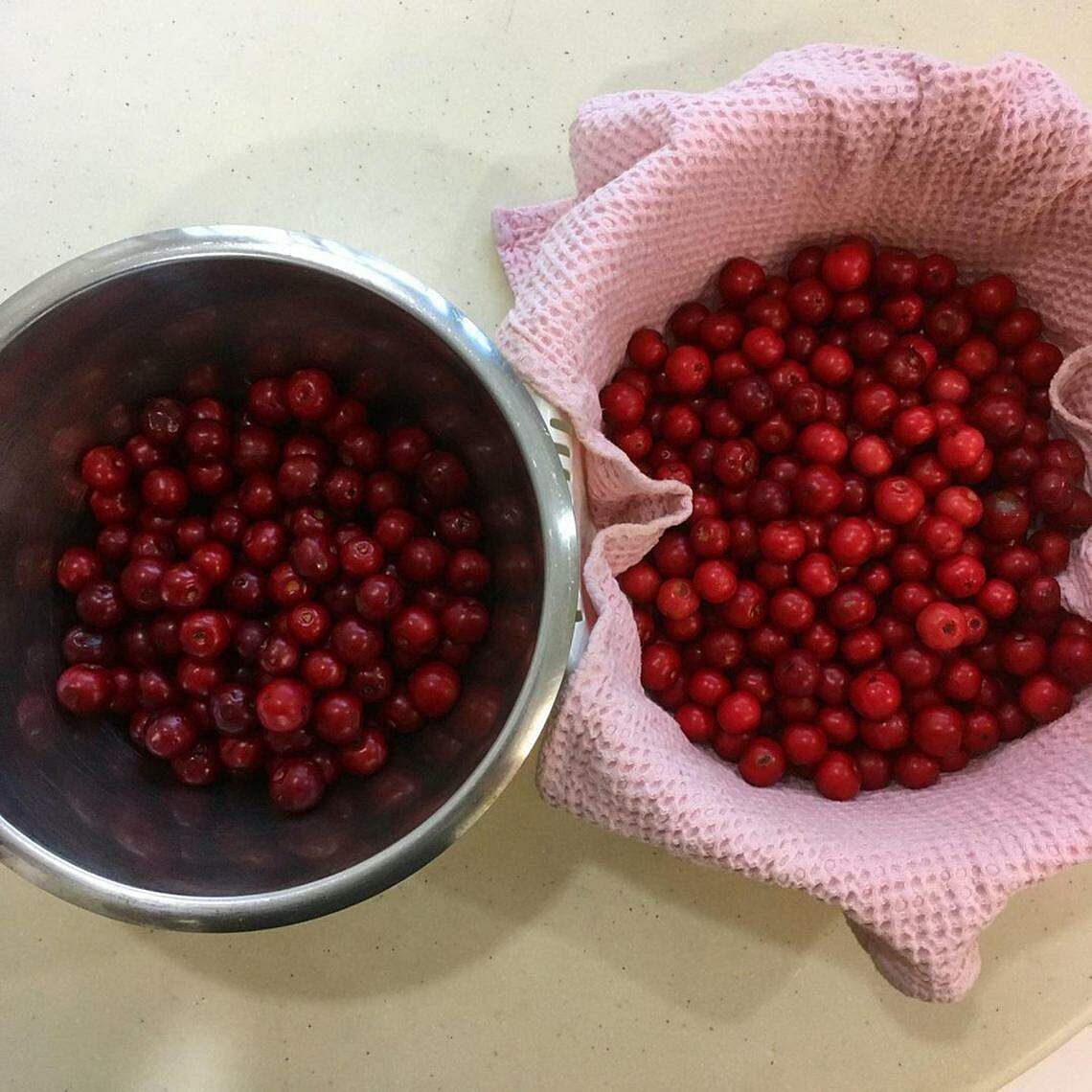
Both Mr Syazwan and Mr Firdaus speak grimly of the “desecration” of Changi Beach in June 2021, when hordes of first-time harvesters descended on the beach at low tide to yank anemone, crab and jellyfish from the sea.
“That is not foraging,” said Mr Firdaus. “Foraging serves a purpose.”
The plunder prompted the National Parks Board (NParks) to institute patrols and put up signs that read in black-and-red letters “no catching of marine creatures”, to preserve the health of the intertidal zone.
Though only the picking of the rarest shellfish is outlawed, meaning common species are by law fair game, Mr Syazwan has not been able to shake the feeling of having to look over his shoulder every time he makes for the beach with his mother. “We forage in constant fear of being filmed or accused of breaking the law,” he said.
Forbidden fruit?
The unease is familiar to both urban and coastal foragers.
Urban forager Michelle Tan, 42, founder of Urban Jungle Folks, opened her interview with the pronouncement: “Foraging is highly illegal in Singapore.”
In response to queries from ST, NParks said it manages about 90 per cent of the seven million trees on the island – in parks, gardens and on state land – all of which are off-limits to foragers who face fines of between $5,000 and $50,000 for illegal plucking.
Even weeds are considered plant parts that can be removed only by NParks’ staff.
The urban foragers have thus had to exercise ingenuity and self-restraint in their practice, confined to the just-under one million trees outside NParks’ remit.
Mr Yeo prepares samples for his foraging classes and never lets his class pick any of the bounty before them, preferring instead to encourage them to look for edible species in their private gardens.
“I see myself as more of an educator,” he said.
Ms Tan, when she used to conduct foraging classes, was also careful to begin her walks in public places and end in a private garden, where participants could finally pick the weeds they had learnt about.
Even when Mr Luo is fully within his rights to forage on privately owned land – such as in condominium grounds or gardens he has been let into – he feels a need to be discreet. “The laws are really awkward,” he said, “I have to avoid being seen because to the uninformed person, it’s just vandalism.”
But the foragers, urban and coastal alike, are not unsympathetic to NParks’ concerns.
The authority said the public should not harvest fruit from public plants for their own safety, as some are poisonous.
There is also concern that foraging done incorrectly may “damage plants, the overall landscape and deprive animals dependent on them for food”, NParks said in its statement to ST.
These are the same concerns that underpin the foragers’ unwritten code of conduct – one that espouses moderation and environmental stewardship.
Mr Luo said: “Ultimately, for foragers, the nub is protecting the environment that feeds you. Never harvest everything, leave some behind for the birds. Waste is always frowned upon, so use every part of the plant.”
He is also respectful of the labour of others and warns his students never to touch plants obviously grown by another for personal enjoyment.
For the islanders, the very suggestion that they would harm the earth is a slight.
“Living in nature is central to the Orang Pulau (Malay for island people) identity,” said Mr Syazwan. “How could we destroy the environment? We depend on it to provide for us.”
In the wake of the Changi Beach episode of 2021, there have been calls from marine advocacy groups to ban coastal foraging entirely to protect the invertebrate sea creatures vulnerable to manhandling by ill-informed beachgoers.
Considering the spectre of a blanket ban on coastal foraging, Mr Syazwan said: “I’m thankful I’m able to learn about my heritage, but I don’t want to just learn, I want to live it.”
Mr Firdaus has a word of advice for those considering a go at the ancient practice. “Foraging is not for everybody. It’s okay to learn, see how cultures do it, but whether you want to start… that should be given more thought.”
